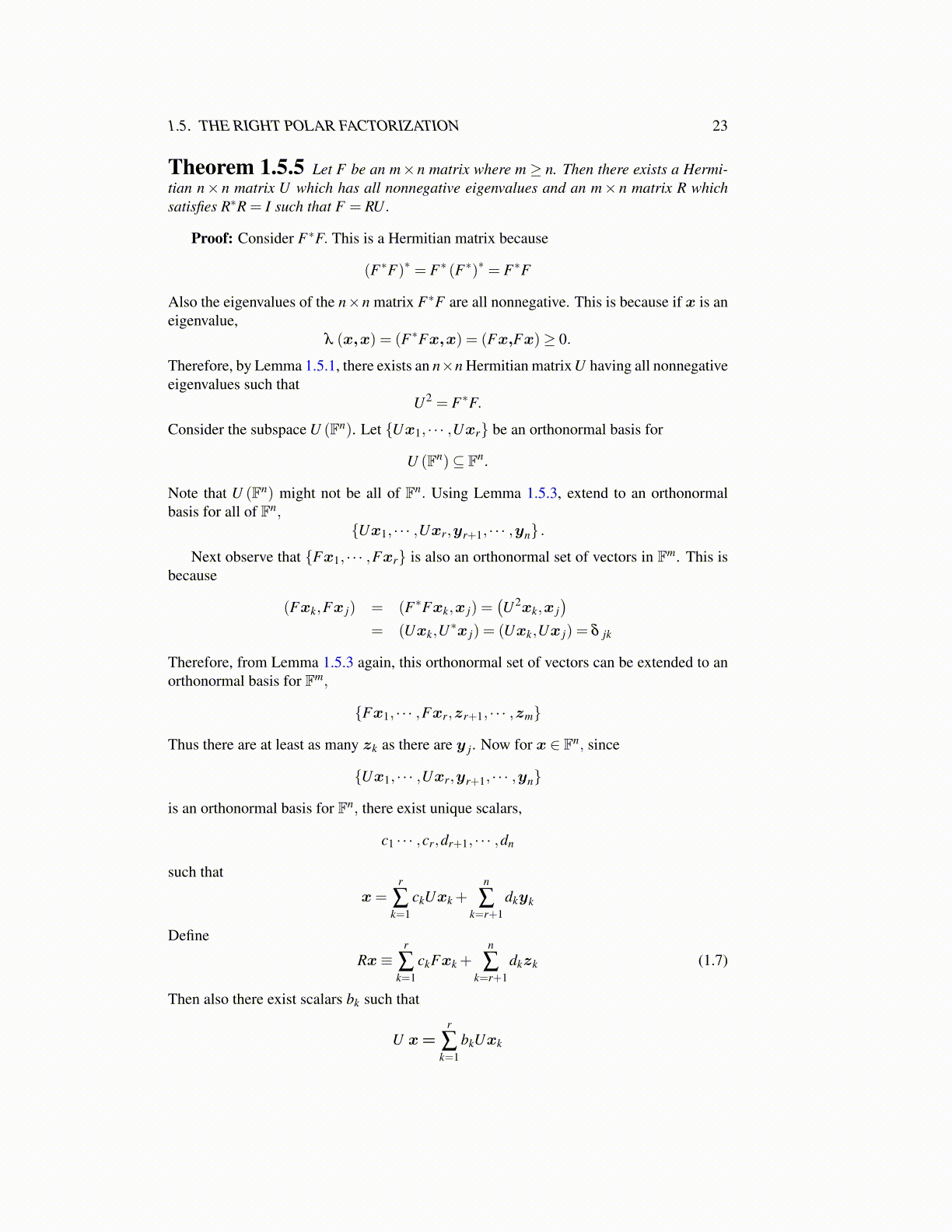
1.5. THE RIGHT POLAR FACTORIZATION 23
Theorem 1.5.5 Let F be an m×n matrix where m≥ n. Then there exists a Hermi-tian n× n matrix U which has all nonnegative eigenvalues and an m× n matrix R whichsatisfies R∗R = I such that F = RU.
Proof: Consider F∗F. This is a Hermitian matrix because
(F∗F)∗ = F∗ (F∗)∗ = F∗F
Also the eigenvalues of the n×n matrix F∗F are all nonnegative. This is because if x is aneigenvalue,
λ (x,x) = (F∗Fx,x) = (Fx,Fx)≥ 0.
Therefore, by Lemma 1.5.1, there exists an n×n Hermitian matrix U having all nonnegativeeigenvalues such that
U2 = F∗F.
Consider the subspace U (Fn). Let {Ux1, · · · ,Uxr} be an orthonormal basis for
U (Fn)⊆ Fn.
Note that U (Fn) might not be all of Fn. Using Lemma 1.5.3, extend to an orthonormalbasis for all of Fn,
{Ux1, · · · ,Uxr,yr+1, · · · ,yn} .
Next observe that {Fx1, · · · ,Fxr} is also an orthonormal set of vectors in Fm. This isbecause
(Fxk,Fx j) = (F∗Fxk,x j) =(U2xk,x j
)= (Uxk,U∗x j) = (Uxk,Ux j) = δ jk
Therefore, from Lemma 1.5.3 again, this orthonormal set of vectors can be extended to anorthonormal basis for Fm,
{Fx1, · · · ,Fxr,zr+1, · · · ,zm}
Thus there are at least as many zk as there are y j. Now for x ∈ Fn, since
{Ux1, · · · ,Uxr,yr+1, · · · ,yn}
is an orthonormal basis for Fn, there exist unique scalars,
c1 · · · ,cr,dr+1, · · · ,dn
such that
x=r
∑k=1
ckUxk +n
∑k=r+1
dkyk
Define
Rx≡r
∑k=1
ckFxk +n
∑k=r+1
dkzk (1.7)
Then also there exist scalars bk such that
U x=r
∑k=1
bkUxk